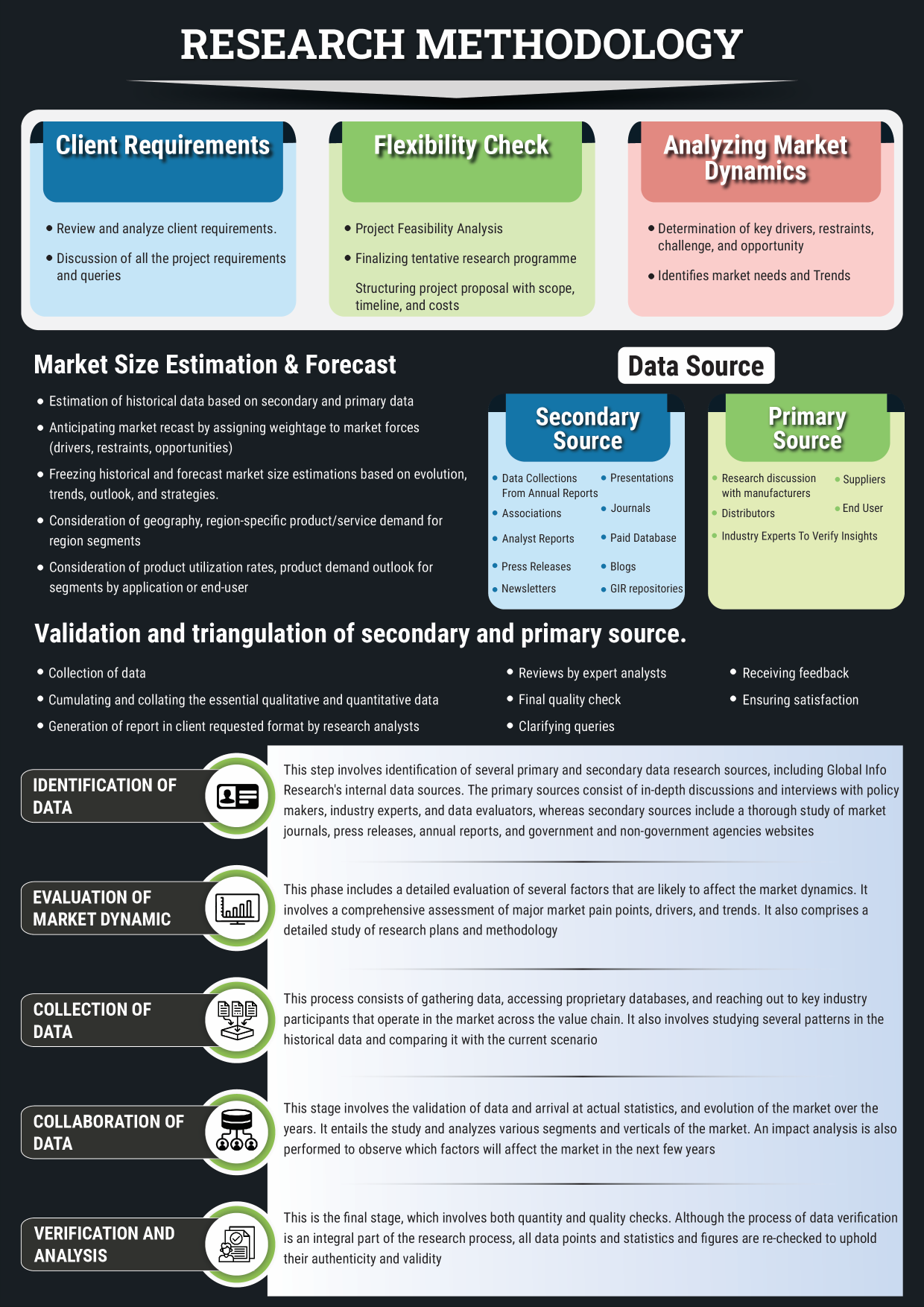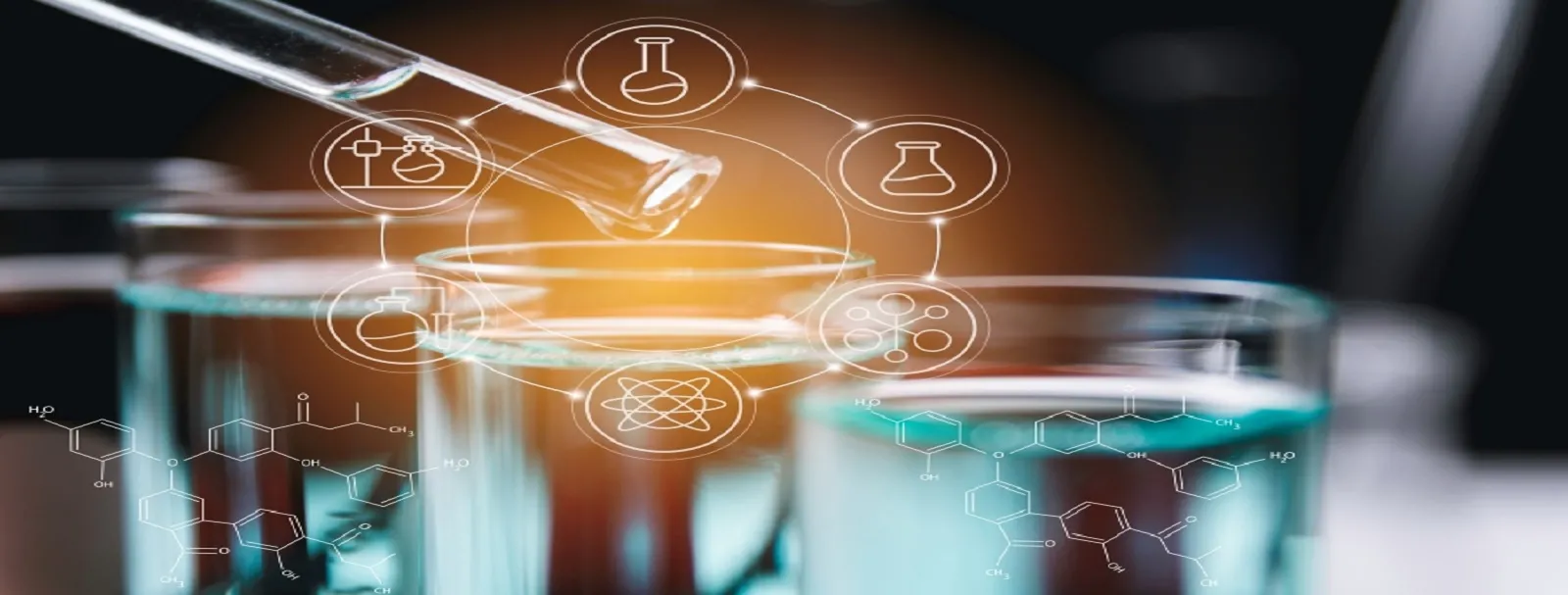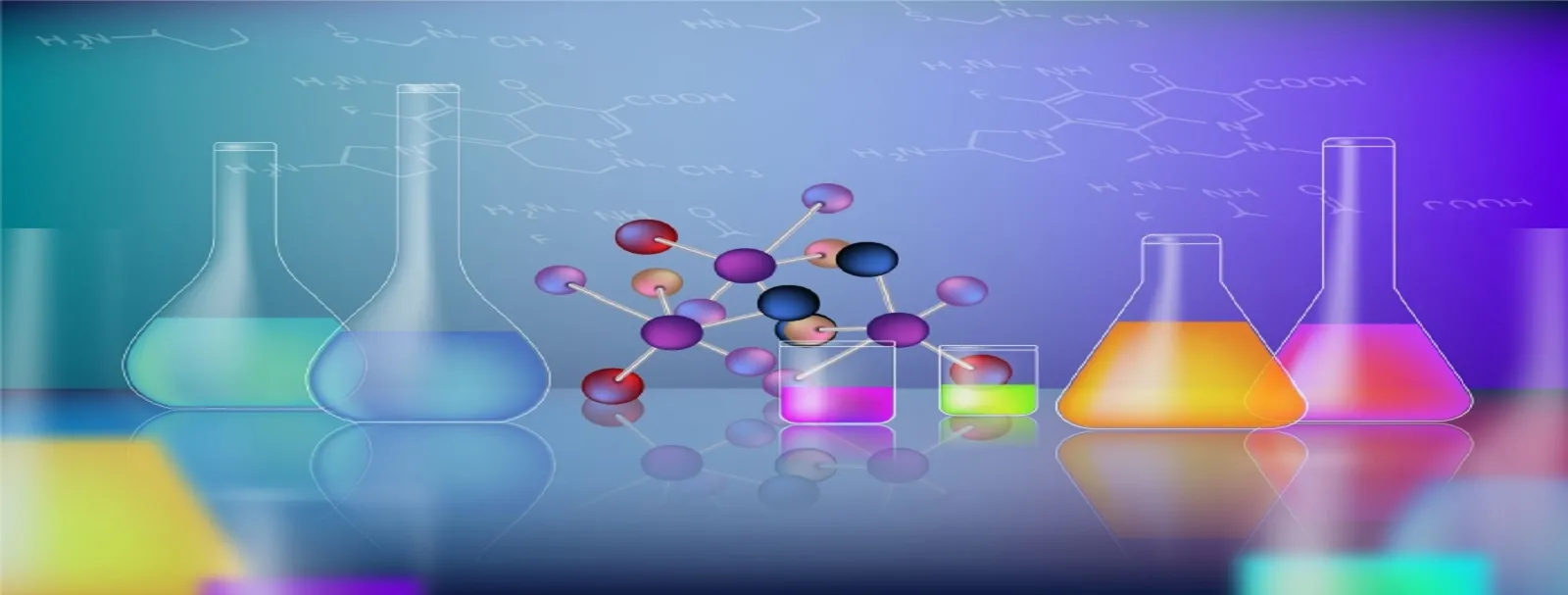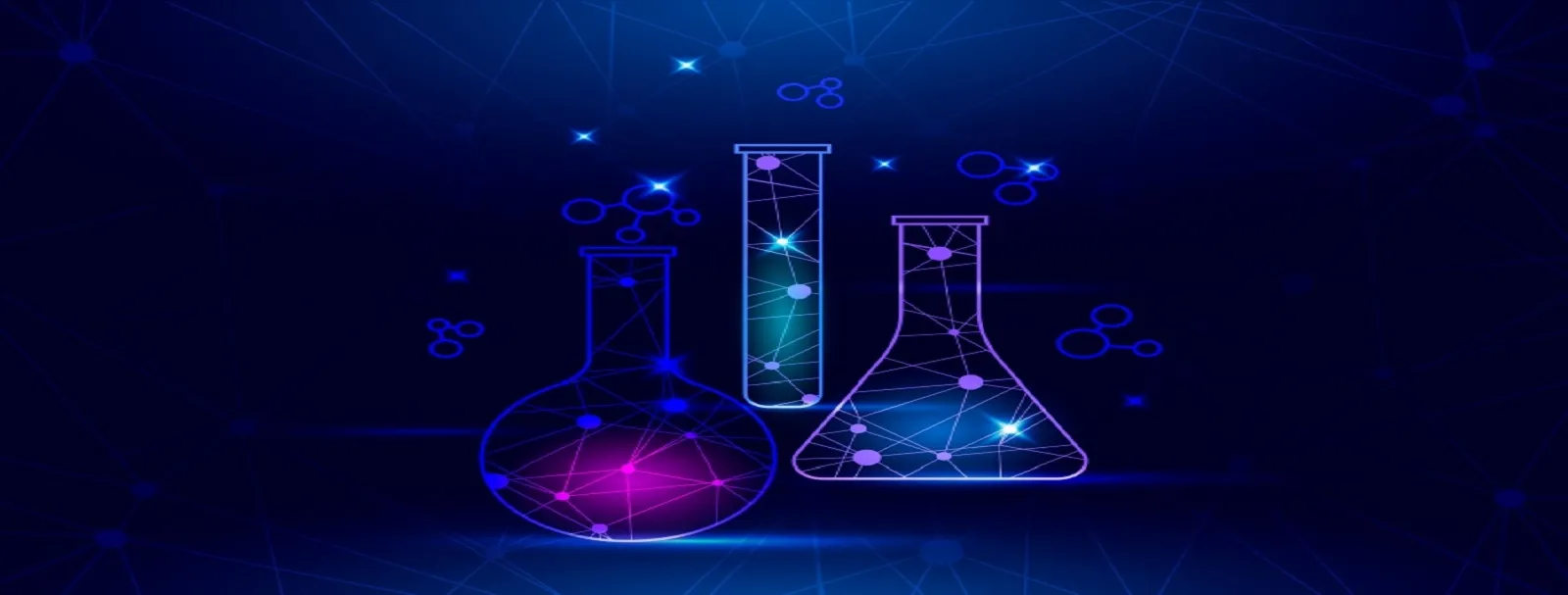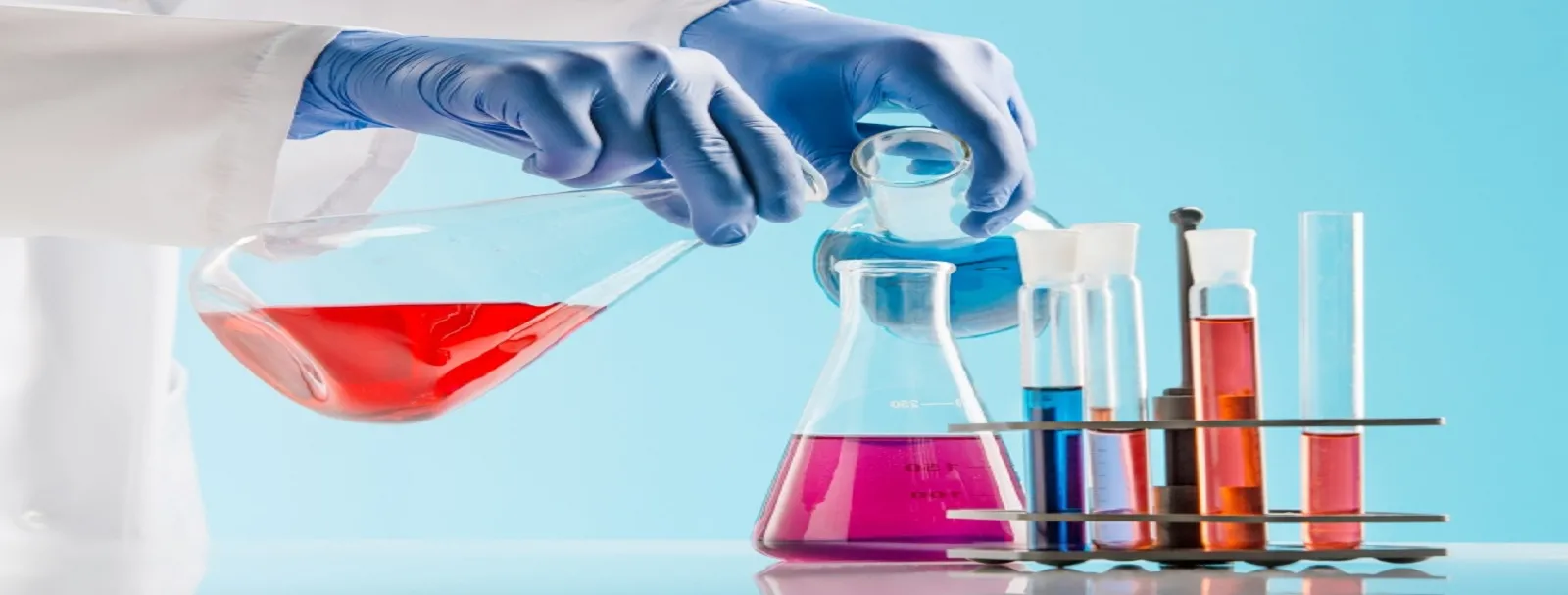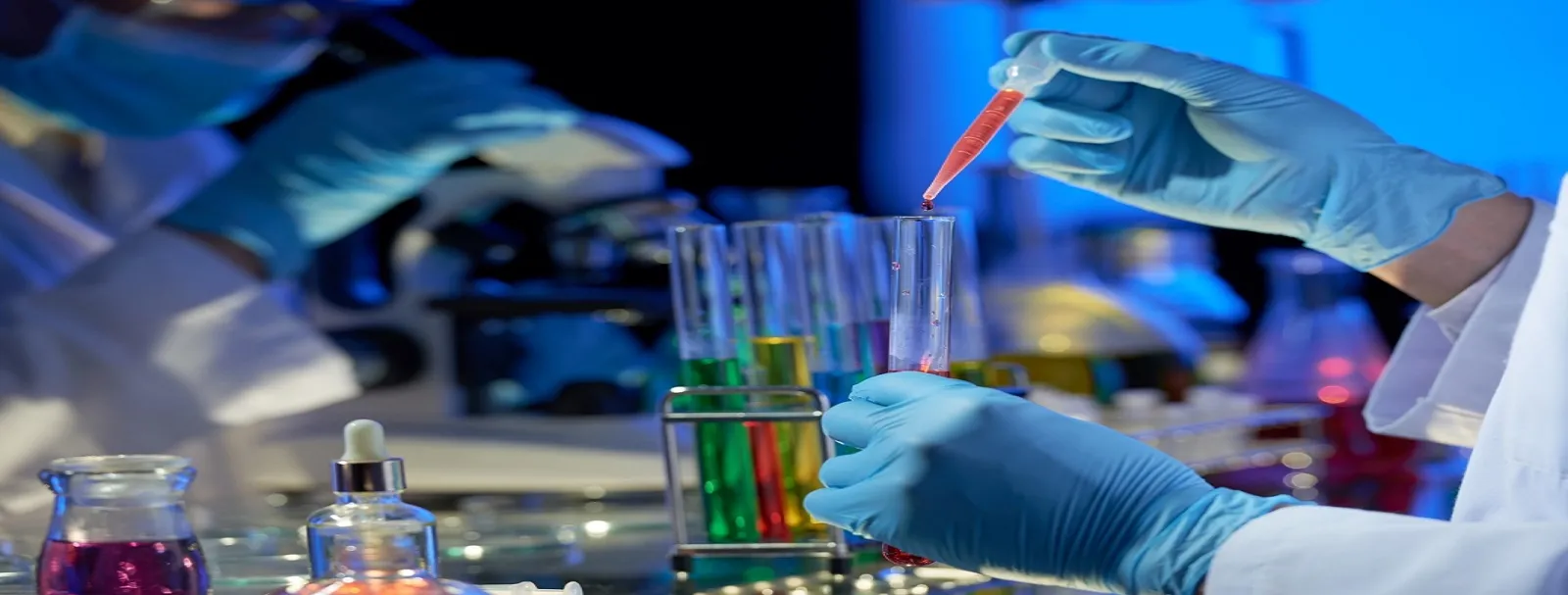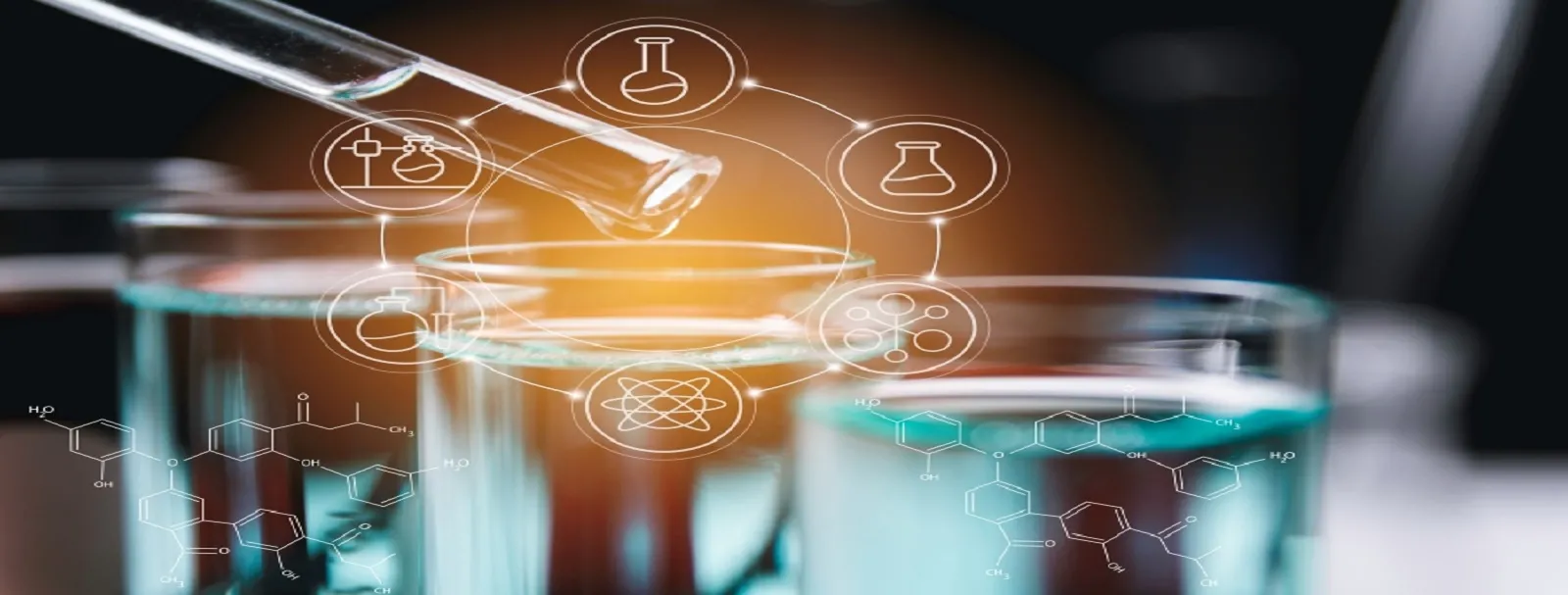Market Outlook
The global Antifreeze Proteins (AFP) Market size was valued at USD 12 million in 2022 and is forecast to a readjusted size of USD 19 million by 2029 with a CAGR of 6.2% during review period.
Introduction: Why the Antifreeze Proteins Market Matters in 2025
The Antifreeze Proteins (AFP) Market is increasingly relevant in 2025 as it enables breakthroughs in cryopreservation, food storage, and agriculture. AFPs inhibit ice crystal formation, protecting cells and tissues at subzero temperatures. Innovations in biotechnology and rising demand for enhanced preservation methods in medical and food industries drive AFP market expansion.
Market Drivers: What’s Fueling the AFP Boom?
Cryopreservation Growth: Improved organ, tissue, and cell preservation for transplants.
Food Industry Demand: Extending shelf life of frozen foods by preventing ice damage.
Agricultural Applications: Frost protection for crops and seeds.
Biotech Advancements: Genetic engineering to produce recombinant AFPs.
Innovation in Focus: How Researchers Are Leading
Recombinant Protein Production: Cost-effective, scalable AFP manufacturing.
Formulation Development: Blending AFPs with cryoprotectants for enhanced efficacy.
Genetic Engineering: Designing AFP variants with improved thermal hysteresis.
Cross-Sector Applications: Extending use into cosmetics and pharmaceuticals.
Regional Breakdown: Where Demand Is Shifting
North America and Europe: Leading due to advanced healthcare and food industries.
Asia-Pacific: Growing adoption in agriculture and food preservation.
Latin America & MEA: Emerging interest in frost protection technologies.
Strategic Considerations: How to Compete in 2025
Scale Production Technologies: Reduce cost barriers for broader use.
Collaborate with End-Users: Develop tailored AFP formulations for specific industries.
Invest in R&D: Innovate new AFP variants with superior performance.
Educate Markets: Increase awareness of AFP benefits in preservation.
Conclusion: The Antifreeze Proteins Market - Unlocking New Frontiers in Preservation
In 2025, AFPs represent a cutting-edge biotech solution transforming how we preserve biological materials and extend food shelf life.
Key Market Players
Unilever
Kaneka
Global Fresh Biotech
Segmentation By Type
Fish AFPs
Plant AFPs
Insect AFPs
Sea Ice Organisms AFPs
Others
Segmentation By Application
Medicine
Food
Others
Segmentation By Region
North America (United States, Canada and Mexico)
Europe (Germany, France, United Kingdom, Russia, Italy, and Rest of Europe)
Asia-Pacific (China, Japan, Korea, India, Southeast Asia, and Australia)
South America (Brazil, Argentina, Colombia, and Rest of South America)
Middle East & Africa (Saudi Arabia, UAE, Egypt, South Africa, and Rest of Middle East & Africa)
Market SWOT Analysis
What are the strengths of the Antifreeze Proteins (AFP) Market in 2025?
Antifreeze proteins have unique applications in preserving biological samples and enhancing cold tolerance in food products, ensuring niche but valuable demand.
What are the weaknesses of the Antifreeze Proteins (AFP) Market in 2025?
High production costs and the complex extraction processes involved in producing AFPs may limit the widespread adoption and market penetration.
What are the opportunities for the Antifreeze Proteins (AFP) Market in 2025?
Increasing demand for AFPs in biotechnology, food preservation, and medical fields presents significant growth prospects, particularly in innovative applications.
What are the threats to the Antifreeze Proteins (AFP) Market in 2025?
The development of synthetic antifreeze alternatives and challenges in scaling up production could limit the growth and adoption of AFPs in commercial sectors.
Market PESTEL Analysis
How do political factors impact the Antifreeze Proteins (AFP) Market in 2025?
Government regulations related to the use of biotechnology in agriculture and pharmaceuticals, as well as international trade policies on bio-based products, influence the growth of the AFP market.
What economic factors affect the Antifreeze Proteins (AFP) Market in 2025?
Economic growth in the agriculture and biotechnology sectors, coupled with fluctuations in research funding and raw material costs, impacts the demand for AFPs in cryopreservation and crop protection.
How do social factors shape the Antifreeze Proteins (AFP) Market in 2025?
The growing demand for improved agricultural products, such as frost-resistant crops, and the need for more sustainable cryopreservation techniques in medical applications contribute to AFP market growth.
What technological factors are relevant to the Antifreeze Proteins (AFP) Market in 2025?
Advancements in genetic engineering and synthetic biology are enhancing the efficiency and application range of antifreeze proteins, enabling new commercial uses across agriculture, medicine, and food industries.
What environmental factors influence the Antifreeze Proteins (AFP) Market in 2025?
Environmental concerns about climate change and the need for frost-resistant crops are driving research into AFPs, offering sustainable solutions for enhancing crop resilience and food security.
How do legal factors impact the Antifreeze Proteins (AFP) Market in 2025?
Regulatory frameworks governing the use of genetic modification in agriculture and biotechnology applications influence the approval process and commercialization of AFPs, particularly in food and crop protection.
Market SIPOC Analysis
Who are the suppliers in the Antifreeze Proteins Market 2025?
Suppliers include biotechnology companies, academic research institutions, and companies focused on the production of antifreeze proteins for industrial and medical applications.
What are the inputs in the Antifreeze Proteins Market 2025?
Inputs include recombinant DNA technology, protein synthesis equipment, and bioengineering processes used to produce antifreeze proteins.
What processes are involved in the Antifreeze Proteins Market 2025?
Processes involve genetic modification of organisms to produce antifreeze proteins, followed by purification, testing, and application in industries like food preservation and cryobiology.
Who are the customers in the Antifreeze Proteins Market 2025?
Customers include food and beverage industries, biopharmaceutical companies, and agricultural sectors requiring antifreeze proteins for cryopreservation and other applications.
What are the outcomes in the Antifreeze Proteins Market 2025?
Outcomes include growing adoption of antifreeze proteins in food storage and preservation, alongside increased use in medical and industrial freezing applications.
Market Porter's Five Forces
What is the threat of new entrants in the Antifreeze Proteins (AFP) Market in 2025?
The threat of new entrants is low. The production of antifreeze proteins involves complex biotechnology and specialized knowledge, which requires significant investment and technical expertise, limiting new entrants.
What is the bargaining power of suppliers in the Antifreeze Proteins (AFP) Market in 2025?
The bargaining power of suppliers is moderate. With few suppliers providing raw materials for AFP production, their influence is significant, but technological advancements can reduce dependency on a few suppliers.
What is the bargaining power of buyers in the Antifreeze Proteins (AFP) Market in 2025?
The bargaining power of buyers is low. Due to the unique and specialized nature of AFPs, buyers have limited alternatives and must rely on established suppliers for their products.
What is the threat of substitute products in the Antifreeze Proteins (AFP) Market in 2025?
The threat of substitutes is low. Antifreeze proteins are unique in their ability to prevent freezing at low temperatures, making alternatives like traditional chemicals or other bio-based solutions less effective.
What is the intensity of competitive rivalry in the Antifreeze Proteins (AFP) Market in 2025?
The intensity of competitive rivalry is moderate. While the market is still niche, competition is growing as demand for AFPs increases in applications such as agriculture, biotechnology, and food preservation.
Market Upstream Analysis
What are the key raw materials in the Antifreeze Proteins (AFP) Market in 2025?
The key raw materials include natural sources of antifreeze proteins derived from fish, insects, and plants, as well as recombinant DNA technology to produce synthetic AFPs for use in biotechnology, food preservation, and cryopreservation.
What role do suppliers play in the Antifreeze Proteins (AFP) Market in 2025?
Suppliers provide the raw materials, including biological sources or genetically engineered organisms, and advanced biotechnological processes to produce AFPs with desired properties for industries like food, pharmaceuticals, and agriculture.
How does the regulatory environment affect upstream factors in this market?
Regulations regarding genetically modified organisms (GMOs), safety standards for food and pharmaceuticals, and environmental impact guide the production of AFPs, ensuring their safe use in various applications while minimizing risks to ecosystems.
What technological advancements influence upstream production in the Antifreeze Proteins (AFP) Market in 2025?
Advancements in genetic engineering, fermentation techniques, and cryopreservation methods are enabling the mass production of AFPs with higher efficacy, stability, and cost-effectiveness for diverse industrial uses.
What challenges do upstream suppliers face in this market?
Suppliers face challenges in scaling up production while maintaining the purity and effectiveness of AFPs, managing the complexity of genetically engineered processes, and meeting the growing demand for AFPs across various industries.
Market Midstream Analysis
What are the key processes involved in the midstream of the Antifreeze Proteins (AFP) Market in 2025?
The key processes involve the extraction and purification of antifreeze proteins from natural sources, followed by research and development to create synthetic versions, packaging, and distribution for use in medical, agricultural, and industrial applications.
How do manufacturers contribute to the Antifreeze Proteins Market in 2025?
Manufacturers focus on improving the production processes for antifreeze proteins, enhancing their stability, and exploring new applications in areas like cryopreservation, food preservation, and agricultural biotechnology.
What is the role of packaging in the midstream of this market?
Packaging ensures the preservation of the antifreeze proteins' effectiveness, maintaining their stability during storage and transportation, especially for sensitive applications in biotechnology and healthcare.
What challenges do companies face in the midstream of this market?
Challenges include ensuring the scalability of production processes, meeting the diverse demands of industries such as agriculture and medicine, and addressing the high cost of synthetic antifreeze protein production.
How do distribution channels affect the Antifreeze Proteins Market in 2025?
Distribution channels play a vital role in getting antifreeze proteins to specialized industries, ensuring they reach medical researchers, biotechnologists, and agricultural companies in a timely manner for their applications.
Market Downstream Analysis
What are the key consumer segments in the Antifreeze Proteins (AFP) Market in 2025?
Key consumers include the food and beverage industry for preservation, the medical industry for cryopreservation of biological samples, and the cosmetics industry for enhancing product stability in extreme temperatures.
What role do distributors and suppliers play in the Antifreeze Proteins (AFP) Market in 2025?
Distributors and suppliers ensure the availability of antifreeze proteins for various applications, providing specialized knowledge and facilitating the supply of high-quality products to meet specific industry needs.
What challenges do companies face in the downstream market of this industry?
Challenges include high production costs of AFPs, limited natural sources, and overcoming scalability issues for industrial applications, particularly in non-food industries.
How does consumer feedback influence the Antifreeze Proteins (AFP) Market in 2025?
Consumer feedback leads to the development of more cost-effective and scalable AFPs, as well as improving product efficacy for diverse applications like cryoprotection and shelf-life extension.
Chapter 1, to describe Antifreeze Proteins (AFP) product scope, market overview, market estimation caveats and base year.
Chapter 2, to profile the top manufacturers of Antifreeze Proteins (AFP), with price, sales, revenue and global market share of Antifreeze Proteins (AFP) from 2018 to 2023.
Chapter 3, the Antifreeze Proteins (AFP) competitive situation, sales quantity, revenue and global market share of top manufacturers are analyzed emphatically by landscape contrast.
Chapter 4, the Antifreeze Proteins (AFP) breakdown data are shown at the regional level, to show the sales quantity, consumption value and growth by regions, from 2018 to 2029.
Chapter 5 and 6, to segment the sales by Type and application, with sales market share and growth rate by type, application, from 2018 to 2029.
Chapter 7, 8, 9, 10 and 11, to break the sales data at the country level, with sales quantity, consumption value and market share for key countries in the world, from 2017 to 2022.and Antifreeze Proteins (AFP) market forecast, by regions, type and application, with sales and revenue, from 2024 to 2029.
Chapter 12, market dynamics, drivers, restraints, trends, Porters Five Forces analysis, and Influence of COVID-19 and Russia-Ukraine War.
Chapter 13, the key raw materials and key suppliers, and industry chain of Antifreeze Proteins (AFP).
Chapter 14 and 15, to describe Antifreeze Proteins (AFP) sales channel, distributors, customers, research findings and conclusion.
1 Market Overview
1.1 Product Overview and Scope of Antifreeze Proteins (AFP)
1.2 Market Estimation Caveats and Base Year
1.3 Market Analysis by Type
1.3.1 Overview: Global Antifreeze Proteins (AFP) Consumption Value by Type: 2018 Versus 2022 Versus 2029
1.3.2 Fish AFPs
1.3.3 Plant AFPs
1.3.4 Insect AFPs
1.3.5 Sea Ice Organisms AFPs
1.3.6 Others
1.4 Market Analysis by Application
1.4.1 Overview: Global Antifreeze Proteins (AFP) Consumption Value by Application: 2018 Versus 2022 Versus 2029
1.4.2 Medicine
1.4.3 Food
1.4.4 Others
1.5 Global Antifreeze Proteins (AFP) Market Size & Forecast
1.5.1 Global Antifreeze Proteins (AFP) Consumption Value (2018 & 2022 & 2029)
1.5.2 Global Antifreeze Proteins (AFP) Sales Quantity (2018-2029)
1.5.3 Global Antifreeze Proteins (AFP) Average Price (2018-2029)
2 Manufacturers Profiles
2.1 Unilever
2.1.1 Unilever Details
2.1.2 Unilever Major Business
2.1.3 Unilever Antifreeze Proteins (AFP) Product and Services
2.1.4 Unilever Antifreeze Proteins (AFP) Sales Quantity, Average Price, Revenue, Gross Margin and Market Share (2018-2023)
2.1.5 Unilever Recent Developments/Updates
2.2 Kaneka
2.2.1 Kaneka Details
2.2.2 Kaneka Major Business
2.2.3 Kaneka Antifreeze Proteins (AFP) Product and Services
2.2.4 Kaneka Antifreeze Proteins (AFP) Sales Quantity, Average Price, Revenue, Gross Margin and Market Share (2018-2023)
2.2.5 Kaneka Recent Developments/Updates
2.3 Global Fresh Biotech
2.3.1 Global Fresh Biotech Details
2.3.2 Global Fresh Biotech Major Business
2.3.3 Global Fresh Biotech Antifreeze Proteins (AFP) Product and Services
2.3.4 Global Fresh Biotech Antifreeze Proteins (AFP) Sales Quantity, Average Price, Revenue, Gross Margin and Market Share (2018-2023)
2.3.5 Global Fresh Biotech Recent Developments/Updates
3 Competitive Environment: Antifreeze Proteins (AFP) by Manufacturer
3.1 Global Antifreeze Proteins (AFP) Sales Quantity by Manufacturer (2018-2023)
3.2 Global Antifreeze Proteins (AFP) Revenue by Manufacturer (2018-2023)
3.3 Global Antifreeze Proteins (AFP) Average Price by Manufacturer (2018-2023)
3.4 Market Share Analysis (2022)
3.4.1 Producer Shipments of Antifreeze Proteins (AFP) by Manufacturer Revenue ($MM) and Market Share (%): 2022
3.4.2 Top 3 Antifreeze Proteins (AFP) Manufacturer Market Share in 2022
3.4.2 Top 6 Antifreeze Proteins (AFP) Manufacturer Market Share in 2022
3.5 Antifreeze Proteins (AFP) Market: Overall Company Footprint Analysis
3.5.1 Antifreeze Proteins (AFP) Market: Region Footprint
3.5.2 Antifreeze Proteins (AFP) Market: Company Product Type Footprint
3.5.3 Antifreeze Proteins (AFP) Market: Company Product Application Footprint
3.6 New Market Entrants and Barriers to Market Entry
3.7 Mergers, Acquisition, Agreements, and Collaborations
4 Consumption Analysis by Region
4.1 Global Antifreeze Proteins (AFP) Market Size by Region
4.1.1 Global Antifreeze Proteins (AFP) Sales Quantity by Region (2018-2029)
4.1.2 Global Antifreeze Proteins (AFP) Consumption Value by Region (2018-2029)
4.1.3 Global Antifreeze Proteins (AFP) Average Price by Region (2018-2029)
4.2 North America Antifreeze Proteins (AFP) Consumption Value (2018-2029)
4.3 Europe Antifreeze Proteins (AFP) Consumption Value (2018-2029)
4.4 Asia-Pacific Antifreeze Proteins (AFP) Consumption Value (2018-2029)
4.5 South America Antifreeze Proteins (AFP) Consumption Value (2018-2029)
4.6 Middle East and Africa Antifreeze Proteins (AFP) Consumption Value (2018-2029)
5 Market Segment by Type
5.1 Global Antifreeze Proteins (AFP) Sales Quantity by Type (2018-2029)
5.2 Global Antifreeze Proteins (AFP) Consumption Value by Type (2018-2029)
5.3 Global Antifreeze Proteins (AFP) Average Price by Type (2018-2029)
6 Market Segment by Application
6.1 Global Antifreeze Proteins (AFP) Sales Quantity by Application (2018-2029)
6.2 Global Antifreeze Proteins (AFP) Consumption Value by Application (2018-2029)
6.3 Global Antifreeze Proteins (AFP) Average Price by Application (2018-2029)
7 North America
7.1 North America Antifreeze Proteins (AFP) Sales Quantity by Type (2018-2029)
7.2 North America Antifreeze Proteins (AFP) Sales Quantity by Application (2018-2029)
7.3 North America Antifreeze Proteins (AFP) Market Size by Country
7.3.1 North America Antifreeze Proteins (AFP) Sales Quantity by Country (2018-2029)
7.3.2 North America Antifreeze Proteins (AFP) Consumption Value by Country (2018-2029)
7.3.3 United States Market Size and Forecast (2018-2029)
7.3.4 Canada Market Size and Forecast (2018-2029)
7.3.5 Mexico Market Size and Forecast (2018-2029)
8 Europe
8.1 Europe Antifreeze Proteins (AFP) Sales Quantity by Type (2018-2029)
8.2 Europe Antifreeze Proteins (AFP) Sales Quantity by Application (2018-2029)
8.3 Europe Antifreeze Proteins (AFP) Market Size by Country
8.3.1 Europe Antifreeze Proteins (AFP) Sales Quantity by Country (2018-2029)
8.3.2 Europe Antifreeze Proteins (AFP) Consumption Value by Country (2018-2029)
8.3.3 Germany Market Size and Forecast (2018-2029)
8.3.4 France Market Size and Forecast (2018-2029)
8.3.5 United Kingdom Market Size and Forecast (2018-2029)
8.3.6 Russia Market Size and Forecast (2018-2029)
8.3.7 Italy Market Size and Forecast (2018-2029)
9 Asia-Pacific
9.1 Asia-Pacific Antifreeze Proteins (AFP) Sales Quantity by Type (2018-2029)
9.2 Asia-Pacific Antifreeze Proteins (AFP) Sales Quantity by Application (2018-2029)
9.3 Asia-Pacific Antifreeze Proteins (AFP) Market Size by Region
9.3.1 Asia-Pacific Antifreeze Proteins (AFP) Sales Quantity by Region (2018-2029)
9.3.2 Asia-Pacific Antifreeze Proteins (AFP) Consumption Value by Region (2018-2029)
9.3.3 China Market Size and Forecast (2018-2029)
9.3.4 Japan Market Size and Forecast (2018-2029)
9.3.5 Korea Market Size and Forecast (2018-2029)
9.3.6 India Market Size and Forecast (2018-2029)
9.3.7 Southeast Asia Market Size and Forecast (2018-2029)
9.3.8 Australia Market Size and Forecast (2018-2029)
10 South America
10.1 South America Antifreeze Proteins (AFP) Sales Quantity by Type (2018-2029)
10.2 South America Antifreeze Proteins (AFP) Sales Quantity by Application (2018-2029)
10.3 South America Antifreeze Proteins (AFP) Market Size by Country
10.3.1 South America Antifreeze Proteins (AFP) Sales Quantity by Country (2018-2029)
10.3.2 South America Antifreeze Proteins (AFP) Consumption Value by Country (2018-2029)
10.3.3 Brazil Market Size and Forecast (2018-2029)
10.3.4 Argentina Market Size and Forecast (2018-2029)
11 Middle East & Africa
11.1 Middle East & Africa Antifreeze Proteins (AFP) Sales Quantity by Type (2018-2029)
11.2 Middle East & Africa Antifreeze Proteins (AFP) Sales Quantity by Application (2018-2029)
11.3 Middle East & Africa Antifreeze Proteins (AFP) Market Size by Country
11.3.1 Middle East & Africa Antifreeze Proteins (AFP) Sales Quantity by Country (2018-2029)
11.3.2 Middle East & Africa Antifreeze Proteins (AFP) Consumption Value by Country (2018-2029)
11.3.3 Turkey Market Size and Forecast (2018-2029)
11.3.4 Egypt Market Size and Forecast (2018-2029)
11.3.5 Saudi Arabia Market Size and Forecast (2018-2029)
11.3.6 South Africa Market Size and Forecast (2018-2029)
12 Market Dynamics
12.1 Antifreeze Proteins (AFP) Market Drivers
12.2 Antifreeze Proteins (AFP) Market Restraints
12.3 Antifreeze Proteins (AFP) Trends Analysis
12.4 Porters Five Forces Analysis
12.4.1 Threat of New Entrants
12.4.2 Bargaining Power of Suppliers
12.4.3 Bargaining Power of Buyers
12.4.4 Threat of Substitutes
12.4.5 Competitive Rivalry
12.5 Influence of COVID-19 and Russia-Ukraine War
12.5.1 Influence of COVID-19
12.5.2 Influence of Russia-Ukraine War
13 Raw Material and Industry Chain
13.1 Raw Material of Antifreeze Proteins (AFP) and Key Manufacturers
13.2 Manufacturing Costs Percentage of Antifreeze Proteins (AFP)
13.3 Antifreeze Proteins (AFP) Production Process
13.4 Antifreeze Proteins (AFP) Industrial Chain
14 Shipments by Distribution Channel
14.1 Sales Channel
14.1.1 Direct to End-User
14.1.2 Distributors
14.2 Antifreeze Proteins (AFP) Typical Distributors
14.3 Antifreeze Proteins (AFP) Typical Customers
15 Research Findings and Conclusion
16 Appendix
16.1 Methodology
16.2 Research Process and Data Source
16.3 Disclaimer
List of Tables
Table 1. Global Antifreeze Proteins (AFP) Consumption Value by Type, (USD Million), 2018 & 2022 & 2029
Table 2. Global Antifreeze Proteins (AFP) Consumption Value by Application, (USD Million), 2018 & 2022 & 2029
Table 3. Unilever Basic Information, Manufacturing Base and Competitors
Table 4. Unilever Major Business
Table 5. Unilever Antifreeze Proteins (AFP) Product and Services
Table 6. Unilever Antifreeze Proteins (AFP) Sales Quantity (Kg), Average Price (USD/Kg), Revenue (USD Million), Gross Margin and Market Share (2018-2023)
Table 7. Unilever Recent Developments/Updates
Table 8. Kaneka Basic Information, Manufacturing Base and Competitors
Table 9. Kaneka Major Business
Table 10. Kaneka Antifreeze Proteins (AFP) Product and Services
Table 11. Kaneka Antifreeze Proteins (AFP) Sales Quantity (Kg), Average Price (USD/Kg), Revenue (USD Million), Gross Margin and Market Share (2018-2023)
Table 12. Kaneka Recent Developments/Updates
Table 13. Global Fresh Biotech Basic Information, Manufacturing Base and Competitors
Table 14. Global Fresh Biotech Major Business
Table 15. Global Fresh Biotech Antifreeze Proteins (AFP) Product and Services
Table 16. Global Fresh Biotech Antifreeze Proteins (AFP) Sales Quantity (Kg), Average Price (USD/Kg), Revenue (USD Million), Gross Margin and Market Share (2018-2023)
Table 17. Global Fresh Biotech Recent Developments/Updates
Table 18. Global Antifreeze Proteins (AFP) Sales Quantity by Manufacturer (2018-2023) & (Kg)
Table 19. Global Antifreeze Proteins (AFP) Revenue by Manufacturer (2018-2023) & (USD Million)
Table 20. Global Antifreeze Proteins (AFP) Average Price by Manufacturer (2018-2023) & (USD/Kg)
Table 21. Market Position of Manufacturers in Antifreeze Proteins (AFP), (Tier 1, Tier 2, and Tier 3), Based on Consumption Value in 2022
Table 22. Head Office and Antifreeze Proteins (AFP) Production Site of Key Manufacturer
Table 23. Antifreeze Proteins (AFP) Market: Company Product Type Footprint
Table 24. Antifreeze Proteins (AFP) Market: Company Product Application Footprint
Table 25. Antifreeze Proteins (AFP) New Market Entrants and Barriers to Market Entry
Table 26. Antifreeze Proteins (AFP) Mergers, Acquisition, Agreements, and Collaborations
Table 27. Global Antifreeze Proteins (AFP) Sales Quantity by Region (2018-2023) & (Kg)
Table 28. Global Antifreeze Proteins (AFP) Sales Quantity by Region (2024-2029) & (Kg)
Table 29. Global Antifreeze Proteins (AFP) Consumption Value by Region (2018-2023) & (USD Million)
Table 30. Global Antifreeze Proteins (AFP) Consumption Value by Region (2024-2029) & (USD Million)
Table 31. Global Antifreeze Proteins (AFP) Average Price by Region (2018-2023) & (USD/Kg)
Table 32. Global Antifreeze Proteins (AFP) Average Price by Region (2024-2029) & (USD/Kg)
Table 33. Global Antifreeze Proteins (AFP) Sales Quantity by Type (2018-2023) & (Kg)
Table 34. Global Antifreeze Proteins (AFP) Sales Quantity by Type (2024-2029) & (Kg)
Table 35. Global Antifreeze Proteins (AFP) Consumption Value by Type (2018-2023) & (USD Million)
Table 36. Global Antifreeze Proteins (AFP) Consumption Value by Type (2024-2029) & (USD Million)
Table 37. Global Antifreeze Proteins (AFP) Average Price by Type (2018-2023) & (USD/Kg)
Table 38. Global Antifreeze Proteins (AFP) Average Price by Type (2024-2029) & (USD/Kg)
Table 39. Global Antifreeze Proteins (AFP) Sales Quantity by Application (2018-2023) & (Kg)
Table 40. Global Antifreeze Proteins (AFP) Sales Quantity by Application (2024-2029) & (Kg)
Table 41. Global Antifreeze Proteins (AFP) Consumption Value by Application (2018-2023) & (USD Million)
Table 42. Global Antifreeze Proteins (AFP) Consumption Value by Application (2024-2029) & (USD Million)
Table 43. Global Antifreeze Proteins (AFP) Average Price by Application (2018-2023) & (USD/Kg)
Table 44. Global Antifreeze Proteins (AFP) Average Price by Application (2024-2029) & (USD/Kg)
Table 45. North America Antifreeze Proteins (AFP) Sales Quantity by Type (2018-2023) & (Kg)
Table 46. North America Antifreeze Proteins (AFP) Sales Quantity by Type (2024-2029) & (Kg)
Table 47. North America Antifreeze Proteins (AFP) Sales Quantity by Application (2018-2023) & (Kg)
Table 48. North America Antifreeze Proteins (AFP) Sales Quantity by Application (2024-2029) & (Kg)
Table 49. North America Antifreeze Proteins (AFP) Sales Quantity by Country (2018-2023) & (Kg)
Table 50. North America Antifreeze Proteins (AFP) Sales Quantity by Country (2024-2029) & (Kg)
Table 51. North America Antifreeze Proteins (AFP) Consumption Value by Country (2018-2023) & (USD Million)
Table 52. North America Antifreeze Proteins (AFP) Consumption Value by Country (2024-2029) & (USD Million)
Table 53. Europe Antifreeze Proteins (AFP) Sales Quantity by Type (2018-2023) & (Kg)
Table 54. Europe Antifreeze Proteins (AFP) Sales Quantity by Type (2024-2029) & (Kg)
Table 55. Europe Antifreeze Proteins (AFP) Sales Quantity by Application (2018-2023) & (Kg)
Table 56. Europe Antifreeze Proteins (AFP) Sales Quantity by Application (2024-2029) & (Kg)
Table 57. Europe Antifreeze Proteins (AFP) Sales Quantity by Country (2018-2023) & (Kg)
Table 58. Europe Antifreeze Proteins (AFP) Sales Quantity by Country (2024-2029) & (Kg)
Table 59. Europe Antifreeze Proteins (AFP) Consumption Value by Country (2018-2023) & (USD Million)
Table 60. Europe Antifreeze Proteins (AFP) Consumption Value by Country (2024-2029) & (USD Million)
Table 61. Asia-Pacific Antifreeze Proteins (AFP) Sales Quantity by Type (2018-2023) & (Kg)
Table 62. Asia-Pacific Antifreeze Proteins (AFP) Sales Quantity by Type (2024-2029) & (Kg)
Table 63. Asia-Pacific Antifreeze Proteins (AFP) Sales Quantity by Application (2018-2023) & (Kg)
Table 64. Asia-Pacific Antifreeze Proteins (AFP) Sales Quantity by Application (2024-2029) & (Kg)
Table 65. Asia-Pacific Antifreeze Proteins (AFP) Sales Quantity by Region (2018-2023) & (Kg)
Table 66. Asia-Pacific Antifreeze Proteins (AFP) Sales Quantity by Region (2024-2029) & (Kg)
Table 67. Asia-Pacific Antifreeze Proteins (AFP) Consumption Value by Region (2018-2023) & (USD Million)
Table 68. Asia-Pacific Antifreeze Proteins (AFP) Consumption Value by Region (2024-2029) & (USD Million)
Table 69. South America Antifreeze Proteins (AFP) Sales Quantity by Type (2018-2023) & (Kg)
Table 70. South America Antifreeze Proteins (AFP) Sales Quantity by Type (2024-2029) & (Kg)
Table 71. South America Antifreeze Proteins (AFP) Sales Quantity by Application (2018-2023) & (Kg)
Table 72. South America Antifreeze Proteins (AFP) Sales Quantity by Application (2024-2029) & (Kg)
Table 73. South America Antifreeze Proteins (AFP) Sales Quantity by Country (2018-2023) & (Kg)
Table 74. South America Antifreeze Proteins (AFP) Sales Quantity by Country (2024-2029) & (Kg)
Table 75. South America Antifreeze Proteins (AFP) Consumption Value by Country (2018-2023) & (USD Million)
Table 76. South America Antifreeze Proteins (AFP) Consumption Value by Country (2024-2029) & (USD Million)
Table 77. Middle East & Africa Antifreeze Proteins (AFP) Sales Quantity by Type (2018-2023) & (Kg)
Table 78. Middle East & Africa Antifreeze Proteins (AFP) Sales Quantity by Type (2024-2029) & (Kg)
Table 79. Middle East & Africa Antifreeze Proteins (AFP) Sales Quantity by Application (2018-2023) & (Kg)
Table 80. Middle East & Africa Antifreeze Proteins (AFP) Sales Quantity by Application (2024-2029) & (Kg)
Table 81. Middle East & Africa Antifreeze Proteins (AFP) Sales Quantity by Region (2018-2023) & (Kg)
Table 82. Middle East & Africa Antifreeze Proteins (AFP) Sales Quantity by Region (2024-2029) & (Kg)
Table 83. Middle East & Africa Antifreeze Proteins (AFP) Consumption Value by Region (2018-2023) & (USD Million)
Table 84. Middle East & Africa Antifreeze Proteins (AFP) Consumption Value by Region (2024-2029) & (USD Million)
Table 85. Antifreeze Proteins (AFP) Raw Material
Table 86. Key Manufacturers of Antifreeze Proteins (AFP) Raw Materials
Table 87. Antifreeze Proteins (AFP) Typical Distributors
Table 88. Antifreeze Proteins (AFP) Typical Customers
List of Figures
Figure 1. Antifreeze Proteins (AFP) Picture
Figure 2. Global Antifreeze Proteins (AFP) Consumption Value by Type, (USD Million), 2018 & 2022 & 2029
Figure 3. Global Antifreeze Proteins (AFP) Consumption Value Market Share by Type in 2022
Figure 4. Fish AFPs Examples
Figure 5. Plant AFPs Examples
Figure 6. Insect AFPs Examples
Figure 7. Sea Ice Organisms AFPs Examples
Figure 8. Others Examples
Figure 9. Global Antifreeze Proteins (AFP) Consumption Value by Application, (USD Million), 2018 & 2022 & 2029
Figure 10. Global Antifreeze Proteins (AFP) Consumption Value Market Share by Application in 2022
Figure 11. Medicine Examples
Figure 12. Food Examples
Figure 13. Others Examples
Figure 14. Global Antifreeze Proteins (AFP) Consumption Value, (USD Million): 2018 & 2022 & 2029
Figure 15. Global Antifreeze Proteins (AFP) Consumption Value and Forecast (2018-2029) & (USD Million)
Figure 16. Global Antifreeze Proteins (AFP) Sales Quantity (2018-2029) & (Kg)
Figure 17. Global Antifreeze Proteins (AFP) Average Price (2018-2029) & (USD/Kg)
Figure 18. Global Antifreeze Proteins (AFP) Sales Quantity Market Share by Manufacturer in 2022
Figure 19. Global Antifreeze Proteins (AFP) Consumption Value Market Share by Manufacturer in 2022
Figure 20. Producer Shipments of Antifreeze Proteins (AFP) by Manufacturer Sales Quantity ($MM) and Market Share (%): 2021
Figure 21. Top 3 Antifreeze Proteins (AFP) Manufacturer (Consumption Value) Market Share in 2022
Figure 22. Top 6 Antifreeze Proteins (AFP) Manufacturer (Consumption Value) Market Share in 2022
Figure 23. Global Antifreeze Proteins (AFP) Sales Quantity Market Share by Region (2018-2029)
Figure 24. Global Antifreeze Proteins (AFP) Consumption Value Market Share by Region (2018-2029)
Figure 25. North America Antifreeze Proteins (AFP) Consumption Value (2018-2029) & (USD Million)
Figure 26. Europe Antifreeze Proteins (AFP) Consumption Value (2018-2029) & (USD Million)
Figure 27. Asia-Pacific Antifreeze Proteins (AFP) Consumption Value (2018-2029) & (USD Million)
Figure 28. South America Antifreeze Proteins (AFP) Consumption Value (2018-2029) & (USD Million)
Figure 29. Middle East & Africa Antifreeze Proteins (AFP) Consumption Value (2018-2029) & (USD Million)
Figure 30. Global Antifreeze Proteins (AFP) Sales Quantity Market Share by Type (2018-2029)
Figure 31. Global Antifreeze Proteins (AFP) Consumption Value Market Share by Type (2018-2029)
Figure 32. Global Antifreeze Proteins (AFP) Average Price by Type (2018-2029) & (USD/Kg)
Figure 33. Global Antifreeze Proteins (AFP) Sales Quantity Market Share by Application (2018-2029)
Figure 34. Global Antifreeze Proteins (AFP) Consumption Value Market Share by Application (2018-2029)
Figure 35. Global Antifreeze Proteins (AFP) Average Price by Application (2018-2029) & (USD/Kg)
Figure 36. North America Antifreeze Proteins (AFP) Sales Quantity Market Share by Type (2018-2029)
Figure 37. North America Antifreeze Proteins (AFP) Sales Quantity Market Share by Application (2018-2029)
Figure 38. North America Antifreeze Proteins (AFP) Sales Quantity Market Share by Country (2018-2029)
Figure 39. North America Antifreeze Proteins (AFP) Consumption Value Market Share by Country (2018-2029)
Figure 40. United States Antifreeze Proteins (AFP) Consumption Value and Growth Rate (2018-2029) & (USD Million)
Figure 41. Canada Antifreeze Proteins (AFP) Consumption Value and Growth Rate (2018-2029) & (USD Million)
Figure 42. Mexico Antifreeze Proteins (AFP) Consumption Value and Growth Rate (2018-2029) & (USD Million)
Figure 43. Europe Antifreeze Proteins (AFP) Sales Quantity Market Share by Type (2018-2029)
Figure 44. Europe Antifreeze Proteins (AFP) Sales Quantity Market Share by Application (2018-2029)
Figure 45. Europe Antifreeze Proteins (AFP) Sales Quantity Market Share by Country (2018-2029)
Figure 46. Europe Antifreeze Proteins (AFP) Consumption Value Market Share by Country (2018-2029)
Figure 47. Germany Antifreeze Proteins (AFP) Consumption Value and Growth Rate (2018-2029) & (USD Million)
Figure 48. France Antifreeze Proteins (AFP) Consumption Value and Growth Rate (2018-2029) & (USD Million)
Figure 49. United Kingdom Antifreeze Proteins (AFP) Consumption Value and Growth Rate (2018-2029) & (USD Million)
Figure 50. Russia Antifreeze Proteins (AFP) Consumption Value and Growth Rate (2018-2029) & (USD Million)
Figure 51. Italy Antifreeze Proteins (AFP) Consumption Value and Growth Rate (2018-2029) & (USD Million)
Figure 52. Asia-Pacific Antifreeze Proteins (AFP) Sales Quantity Market Share by Type (2018-2029)
Figure 53. Asia-Pacific Antifreeze Proteins (AFP) Sales Quantity Market Share by Application (2018-2029)
Figure 54. Asia-Pacific Antifreeze Proteins (AFP) Sales Quantity Market Share by Region (2018-2029)
Figure 55. Asia-Pacific Antifreeze Proteins (AFP) Consumption Value Market Share by Region (2018-2029)
Figure 56. China Antifreeze Proteins (AFP) Consumption Value and Growth Rate (2018-2029) & (USD Million)
Figure 57. Japan Antifreeze Proteins (AFP) Consumption Value and Growth Rate (2018-2029) & (USD Million)
Figure 58. Korea Antifreeze Proteins (AFP) Consumption Value and Growth Rate (2018-2029) & (USD Million)
Figure 59. India Antifreeze Proteins (AFP) Consumption Value and Growth Rate (2018-2029) & (USD Million)
Figure 60. Southeast Asia Antifreeze Proteins (AFP) Consumption Value and Growth Rate (2018-2029) & (USD Million)
Figure 61. Australia Antifreeze Proteins (AFP) Consumption Value and Growth Rate (2018-2029) & (USD Million)
Figure 62. South America Antifreeze Proteins (AFP) Sales Quantity Market Share by Type (2018-2029)
Figure 63. South America Antifreeze Proteins (AFP) Sales Quantity Market Share by Application (2018-2029)
Figure 64. South America Antifreeze Proteins (AFP) Sales Quantity Market Share by Country (2018-2029)
Figure 65. South America Antifreeze Proteins (AFP) Consumption Value Market Share by Country (2018-2029)
Figure 66. Brazil Antifreeze Proteins (AFP) Consumption Value and Growth Rate (2018-2029) & (USD Million)
Figure 67. Argentina Antifreeze Proteins (AFP) Consumption Value and Growth Rate (2018-2029) & (USD Million)
Figure 68. Middle East & Africa Antifreeze Proteins (AFP) Sales Quantity Market Share by Type (2018-2029)
Figure 69. Middle East & Africa Antifreeze Proteins (AFP) Sales Quantity Market Share by Application (2018-2029)
Figure 70. Middle East & Africa Antifreeze Proteins (AFP) Sales Quantity Market Share by Region (2018-2029)
Figure 71. Middle East & Africa Antifreeze Proteins (AFP) Consumption Value Market Share by Region (2018-2029)
Figure 72. Turkey Antifreeze Proteins (AFP) Consumption Value and Growth Rate (2018-2029) & (USD Million)
Figure 73. Egypt Antifreeze Proteins (AFP) Consumption Value and Growth Rate (2018-2029) & (USD Million)
Figure 74. Saudi Arabia Antifreeze Proteins (AFP) Consumption Value and Growth Rate (2018-2029) & (USD Million)
Figure 75. South Africa Antifreeze Proteins (AFP) Consumption Value and Growth Rate (2018-2029) & (USD Million)
Figure 76. Antifreeze Proteins (AFP) Market Drivers
Figure 77. Antifreeze Proteins (AFP) Market Restraints
Figure 78. Antifreeze Proteins (AFP) Market Trends
Figure 79. Porters Five Forces Analysis
Figure 80. Manufacturing Cost Structure Analysis of Antifreeze Proteins (AFP) in 2022
Figure 81. Manufacturing Process Analysis of Antifreeze Proteins (AFP)
Figure 82. Antifreeze Proteins (AFP) Industrial Chain
Figure 83. Sales Quantity Channel: Direct to End-User vs Distributors
Figure 84. Direct Channel Pros & Cons
Figure 85. Indirect Channel Pros & Cons
Figure 86. Methodology
Figure 87. Research Process and Data Source

